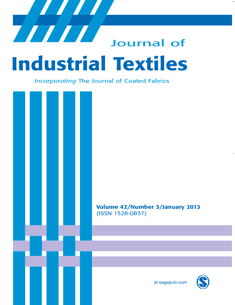
Journal of Industrial Textiles
Scope & Guideline
Advancing Knowledge in Textile Engineering
Introduction
Aims and Scopes
- Innovative Textile Materials:
The journal emphasizes research on novel textile materials, including composites, nanofibers, and biocomposites, aimed at improving mechanical, thermal, and functional properties for diverse applications. - Smart and Functional Textiles:
A core focus is on the development of smart textiles integrating sensors and electronics, enhancing functionalities such as health monitoring, thermal regulation, and electromagnetic shielding. - Sustainability in Textiles:
The journal advocates for sustainable practices by publishing studies related to eco-friendly materials, recycling methods, and the use of natural fibers in textile production. - Textile Performance under Various Conditions:
Research on the performance of textiles under different environmental conditions, including thermal, mechanical, and chemical exposures, is a significant area of interest. - Advanced Manufacturing Techniques:
The journal covers advancements in textile manufacturing processes, including electrospinning, 3D knitting, and additive manufacturing, to enhance the efficiency and capabilities of textile production.
Trending and Emerging
- Integration of Nanotechnology:
There is a marked increase in research integrating nanotechnology into textiles, leading to advancements in antimicrobial properties, enhanced durability, and superior performance characteristics. - Smart Textiles and Wearable Technologies:
Research on smart textiles, particularly those that incorporate sensors and electronic components for health monitoring and environmental interaction, is rapidly gaining attention. - Sustainable and Biodegradable Materials:
An emerging trend is the focus on developing sustainable and biodegradable textile materials, reflecting a broader societal shift towards eco-friendly practices. - Functional Coatings for Textiles:
There is a growing interest in textiles that utilize advanced coatings for specific functionalities, such as water repellency, UV protection, and flame retardancy. - Textiles in Healthcare Applications:
The application of textiles in healthcare, particularly in wound care, antimicrobial fabrics, and smart medical textiles, is increasingly prominent, driven by the demand for innovative healthcare solutions.
Declining or Waning
- Traditional Textile Manufacturing Techniques:
Research focused solely on conventional textile manufacturing methods is decreasing as newer technologies, such as 3D printing and advanced weaving techniques, gain traction. - Basic Textile Properties Studies:
There is a noticeable decline in studies that merely describe the basic mechanical and physical properties of textiles without exploring innovative applications or enhancements. - Non-Sustainable Practices:
Research emphasizing non-sustainable practices or materials is waning, as there is a growing emphasis on environmental impact and sustainability in textile production.
Similar Journals

AIMS Materials Science
Empowering Research in Materials ScienceAIMS Materials Science is an esteemed open-access journal dedicated to advancing the field of materials science. Published by the American Institute of Mathematical Sciences (AIMS), this journal has been a vital resource for researchers, professionals, and students since its inception in 2014. With an ISSN of 2372-0468 and an E-ISSN of 2372-0484, it focuses on disseminating high-quality research in materials science, ranging from general materials science to cutting-edge advancements in innovative materials applications. Currently ranked Q3 in the 2023 Scopus Materials Science (miscellaneous) category, with a ranking of 253/463, AIMS Materials Science strives to provide an open forum for scholarly dialogue and collaboration, ensuring valuable insights are accessible to the global scientific community. The journal's commitment to open access enhances its visibility and reach, further promoting impactful research in this dynamic field.

MATERIALS AND MANUFACTURING PROCESSES
Driving Impactful Discoveries in Materials and Manufacturing.MATERIALS AND MANUFACTURING PROCESSES, published by Taylor & Francis Inc, is a leading journal dedicated to the dynamic fields of materials science and manufacturing engineering. Established in 1989, the journal has built a formidable reputation, exemplified by its prestigious Q1 rankings in 2023 across various categories, including Industrial and Manufacturing Engineering, Materials Science, Mechanical Engineering, and Mechanics of Materials. With a robust focus on innovative research and the latest advancements in manufacturing techniques and materials application, the journal serves as a vital resource for researchers, professionals, and students alike. The journal is indexed in renowned databases and boasts high impact factors, reflecting its influence in the academic community. Although it does not offer open access, it provides extensive platforms for disseminating crucial findings that push the boundaries of engineering and science. For those seeking impactful research contributions, MATERIALS AND MANUFACTURING PROCESSES remains at the forefront of fostering scholarly dialogue and advancing the field.
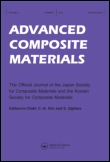
ADVANCED COMPOSITE MATERIALS
Pioneering the Next Generation of CompositesADVANCED COMPOSITE MATERIALS, published by Taylor & Francis Ltd, is a leading peer-reviewed journal in the field of materials science, specifically focusing on the innovative development and applications of composite materials. With an ISSN of 0924-3046 and E-ISSN 1568-5519, this journal serves as a vital resource for researchers and professionals worldwide, examining cutting-edge advancements and methodologies in composites, ceramics, and mechanical engineering. Having secured a solid standing in the academic community, it boasts impressive Scopus rankings, such as #185 in Mechanical Engineering with a 72nd percentile and #46 in Ceramics and Composites, emphasizing its relevance and rigor. Although not an open-access publication, its insights are invaluable for those looking to explore, contribute to, and stay abreast of the latest breakthroughs in the field from 1991 through 2024. By targeting critical areas within mechanics and material sciences, the journal continues to foster innovation and scholarly discussion, making it an essential venue for specialists striving to advance the capabilities and applications of composite materials.
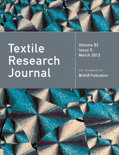
TEXTILE RESEARCH JOURNAL
Transforming Ideas into Textile SolutionsTEXTILE RESEARCH JOURNAL, published by SAGE PUBLICATIONS LTD, is a premier academic journal dedicated to the field of textile and materials science, specifically focusing on advances in chemical engineering and polymer technology. With an impressive history dating back to 1931, this journal has continually adapted to the evolving landscape of textile research, aligning its objectives with the latest scientific developments and practical applications. Ranked in the Q2 category for both Chemical Engineering (miscellaneous) and Polymers and Plastics in the 2023 Scopus rankings, the journal serves as a critical platform for disseminating innovative research and groundbreaking methodologies, appealing to researchers, industry professionals, and students alike. While it is not an open-access journal, it remains a vital resource for those seeking high-quality, peer-reviewed literature that bridges the gap between academia and industry. The journal's robust thematic focus and commitment to excellence make it indispensable for anyone looking to stay on the forefront of textile research.
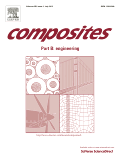
COMPOSITES PART B-ENGINEERING
Fostering Innovation in Engineering and Material ApplicationsCOMPOSITES PART B-ENGINEERING, published by Elsevier Science Ltd, stands at the forefront of research in the fields of engineering and materials science, specifically targeting the domains of composites, ceramics, and mechanical engineering. With an impressive impact factor and categorized in the prestigious Q1 quartiles across multiple categories including Industrial and Manufacturing Engineering and Mechanics of Materials, this journal fosters innovative research that significantly contributes to the advancement of composite materials and their applications. The journal has been diligently publishing high-quality peer-reviewed articles since its inception in 1996, and it continues to attract top-tier contributors and researchers who are dedicated to exploring emergent technologies and methodologies. Researchers, professionals, and students will find valuable insights and an extensive pool of resources in this essential journal, available through Open Access options that enhance its visibility and reach, allowing the dissemination of crucial knowledge to the global scientific community.
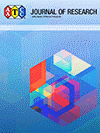
AATCC Journal of Research
Connecting research and technology for a sustainable future.AATCC Journal of Research is an esteemed publication at the forefront of materials science, focusing on the latest advancements in the fields of materials chemistry, polymers and plastics, and process chemistry and technology. Published by SAGE Publications Inc. in the United States, the journal disseminates high-quality research that shapes the future of textile and materials innovation through rigorous peer-reviewed studies. With a notable impact factor indicative of its scholarly influence, AATCC Journal of Research stands out in the Q3 quartile rankings across its categories for 2023, making it a significant platform for emerging research and technological advancements. The journal's commitment to excellence is reflected in its extensive coverage from 2014 to 2024, and it is an essential resource for researchers, professionals, and students aiming to stay abreast of the latest trends and technologies in the materials science domain. While it operates under a traditional access model, the potential for pioneering knowledge exchange remains paramount, further solidifying its role in the academic and professional communities.

FIBRES & TEXTILES IN EASTERN EUROPE
Exploring the Future of Fibres and Textiles in a Changing WorldFIBRES & TEXTILES IN EASTERN EUROPE, published by the Lukasiewicz Research Network - Lodz Institute of Technology, is a prominent academic journal dedicated to advancing knowledge in the fields of materials science, engineering, and environmental research within the textile industries of Eastern Europe. Since its inception in 1993, this journal has become a vital resource for researchers, professionals, and students alike, focusing on the latest innovations and trends in fiber and textile technology. With an impressive classification of Q3 in several categories, including Business and International Management, Environmental Science, and Industrial Manufacturing Engineering, it aims to bridge the gap between research and practical application. Although it is an open-access journal, readers can easily access valuable insights and findings that are crucial for both academic and industrial stakeholders. As global sustainability and material efficiency become increasingly pressing issues, FIBRES & TEXTILES IN EASTERN EUROPE plays an essential role in disseminating research that addresses these challenges while promoting collaboration across diverse disciplines.
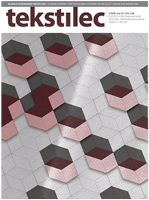
Tekstilec
Unraveling the threads of multidisciplinary textile research.Tekstilec, an esteemed journal published by University of Ljubljana, Slovenia, has been a prominent platform in the fields of textiles, engineering, and industrial management since its establishment in 1989. With an Open Access model since 2000, the journal ensures that scholarly research is accessible to a global audience, fostering the dissemination of knowledge across various disciplines. While its impact factor remains unlisted, Tekstilec holds respectable rankings within its categorized quartiles, featuring a 2023 Q4 ranking in Business and International Management and Q3 rankings in multiple engineering and material science categories. This positions the journal as a vital resource for researchers, professionals, and students seeking insights into textiles and their multidisciplinary applications. With a commitment to advancing knowledge in its scope, Tekstilec invites contributions that explore innovative research and practical developments, encouraging collaboration within the global academic community.

Tekstil ve Konfeksiyon
Fostering Interdisciplinary Insights in Textile and FashionTekstil ve Konfeksiyon, a distinguished journal published by the E.U. Printing and Publishing House, serves as a vital resource in the fields of Industrial and Manufacturing Engineering as well as Materials Science. With an ISSN of 1300-3356, this Turkish journal has witnessed significant development since its inception in 2008, continuing to contribute valuable insights and advancements through 2024. Although categorized in the third quartile (Q3) for Industrial and Manufacturing Engineering and the fourth quartile (Q4) for Materials Science, the journal ranks respectably within its fields—249th out of 384 and 357th out of 463, respectively, according to Scopus. Researchers, professionals, and students can gain access to a variety of cutting-edge studies and applications that reflect the latest trends and innovations in textile and apparel technology. The journal emphasizes the importance of practical applications and interdisciplinary research, fostering a platform for knowledge exchange and development aimed at pushing the boundaries of textile and clothing sciences.

REVIEWS ON ADVANCED MATERIALS SCIENCE
Empowering Research Through Open Access InsightsREVIEWS ON ADVANCED MATERIALS SCIENCE, published by De Gruyter Poland SP Z O O, is a preeminent open-access journal dedicated to disseminating cutting-edge research in the fields of condensed matter physics, materials science, and nanoscience. Since its inception in 2003, the journal has established itself as a crucial platform for scholars and practitioners to share innovative insights and advancements, achieving a commendable Q2 ranking in its respective categories for 2023. With its headquarters in the Russian Federation, the journal is not only committed to expanding the frontiers of scientific knowledge but also emphasizes inclusivity through its open-access model, which has been in effect since 2019, enabling universal access to its high-quality content. With an impactful standing illustrated by its Scopus rankings—136th in Condensed Matter Physics and 186th in General Materials Science—REVIEWS ON ADVANCED MATERIALS SCIENCE stands as a vital resource for researchers, professionals, and students eager to engage with contemporary discussions and discoveries in materials science.